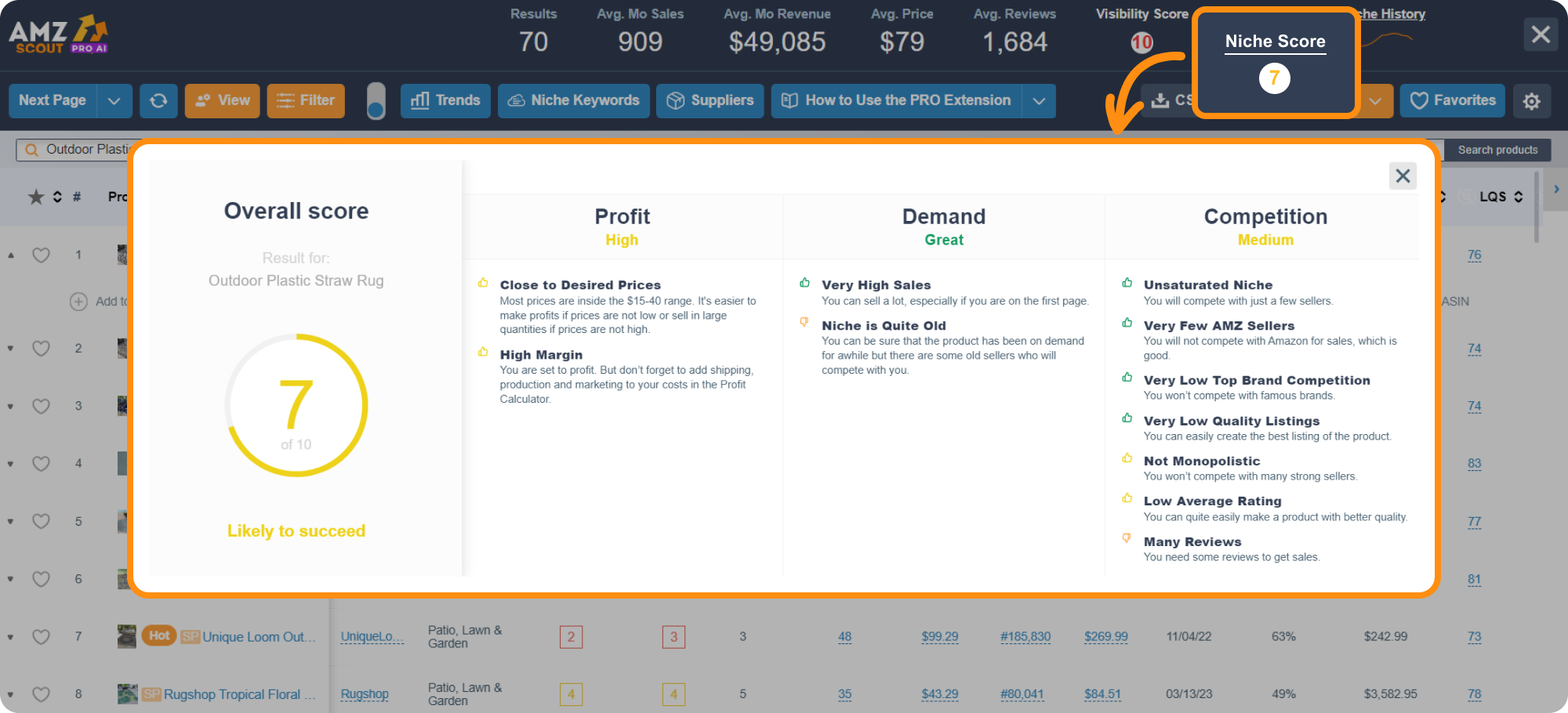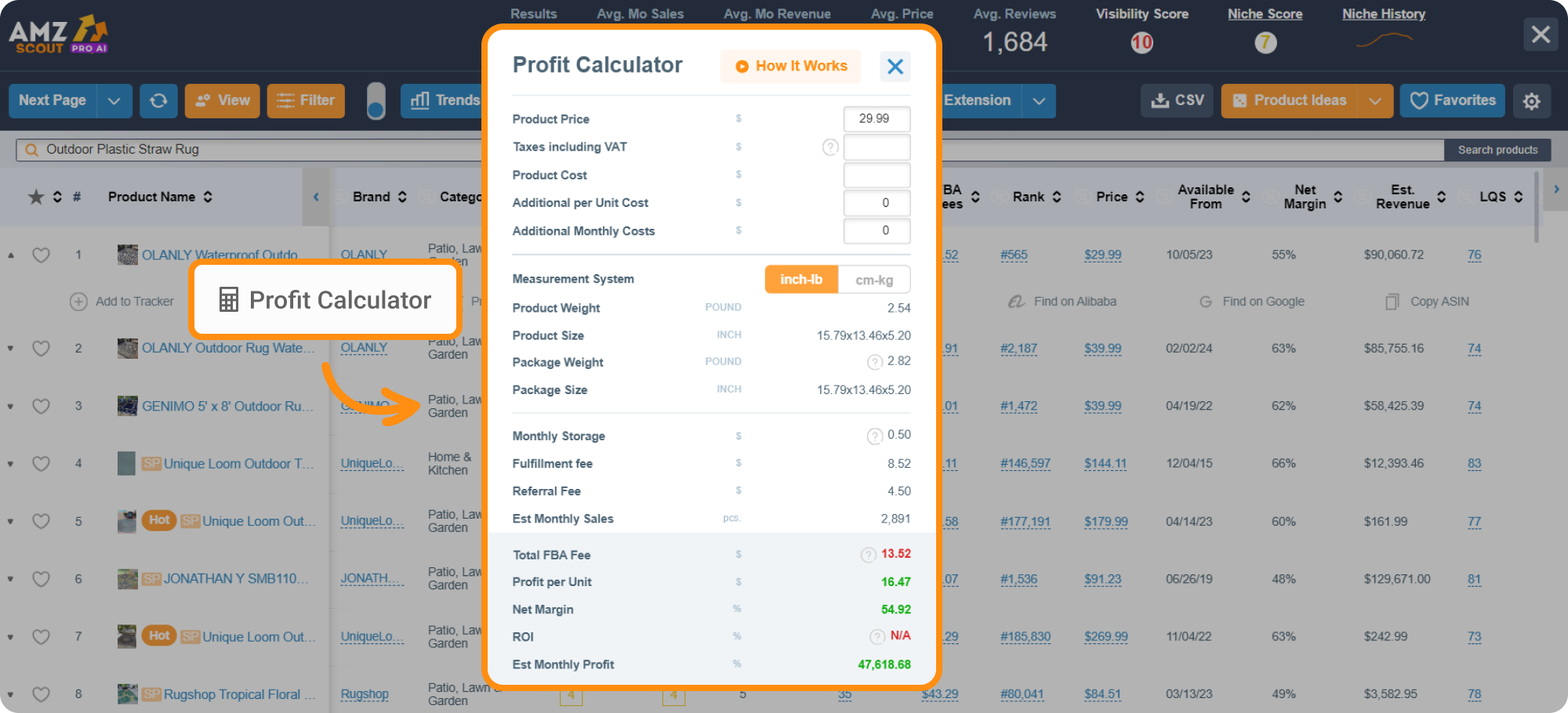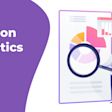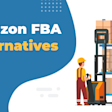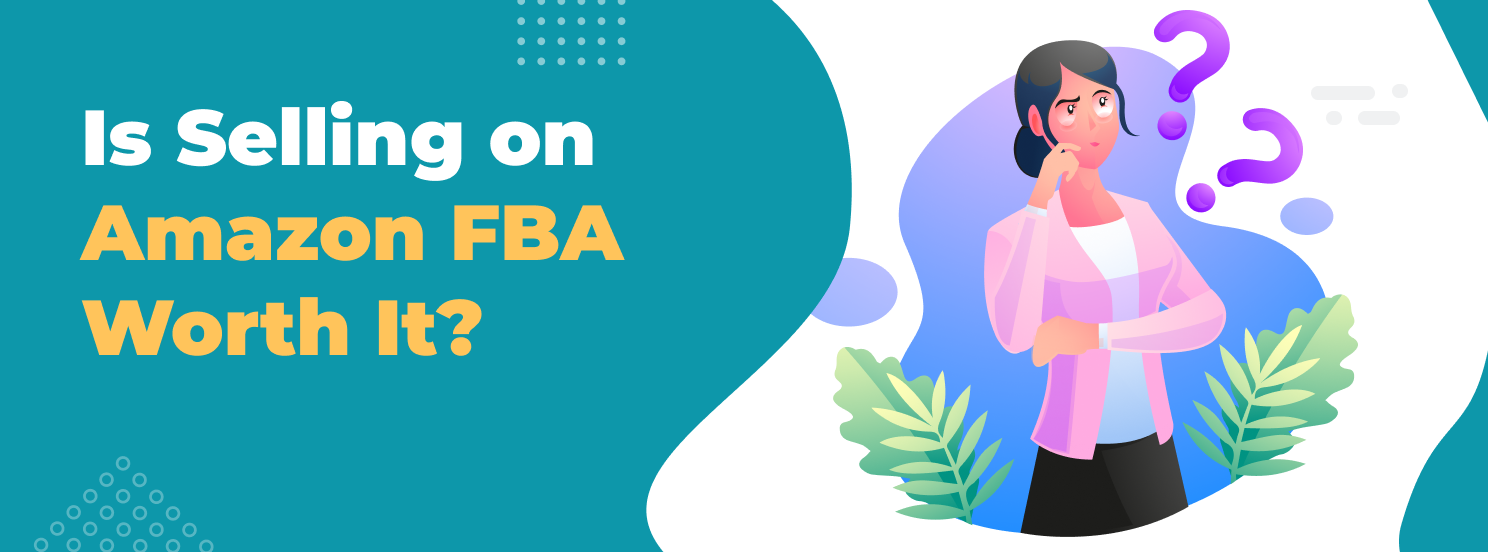
Is Selling on Amazon FBA Worth It? 2025 Insights
When people consider starting an online business, Amazon FBA frequently stands out as a top choice. As one of the largest e-commerce platforms, Amazon offers great revenue opportunities, especially for FBA sellers. Before you begin, it's essential to assess this business model thoroughly.
Table of contents
In this article, we'll compare costs and potential earnings to answer the question, "Is Amazon FBA worth it in 2025?
The Pros and Cons of an Amazon FBA Business
As the saying goes, "Every cloud has a silver lining." Similarly, starting an Amazon FBA business offers both opportunities and challenges. It's important for beginners to understand the specifics of this business model in order to gain valuable insights and make informed decisions.
Selling with Amazon FBA offers numerous benefits to sellers, including:
No logistics burdens: Amazon handles all aspects of order fulfillment, so you don’t need to pack orders or deal with shipping, which is especially beneficial during peak periods.
More customers: Amazon FBA provides access to 230 million Prime customers worldwide. Additionally, Amazon makes international shipping more accessible, easing concerns for sellers who may be hesitant to sell abroad.
Increased visibility: FBA products get the ‘Prime’ badge which is a quality indicator. This enables them to benefit from Amazon’s fast shipping and attract more customers. The Amazon A10 algorithm also prioritizes FBA items in search results.
No customer service hassles: Amazon also manages all returns and post-sale questions. Amazon FBA provides a consistent and professional level of service, enhancing customer satisfaction and loyalty.
Scalability: With fewer logistical concerns, you can focus on other aspects of your business to drive growth. You can scale your business more effectively by taking advantage of high-traffic events like Prime Day, which are accessible for FBA sellers.
However, despite these numerous advantages, there are also additional factors and potential drawbacks to consider. Sellers often question whether starting an Amazon business is worth it due to reasons like:
Costs: Amazon charges fees for its services, plus a referral fee that averages around a 15% commission on sales. There are also return fees, which sometimes make it cheaper to leave the return with Amazon.
Limitations: You must adhere to Amazon’s rules on gated categories, HAZMAT items, and branded products. You're also subject to Amazon's related fees or other policy adjustments.
Lack of control: You can’t choose a cheaper shipping carrier or control packaging, which is crucial for fragile and expensive items.
Initial investments: In order to send products to FBA centers, you need to buy a batch of goods upfront. This requirement makes the low-cost dropshipping model (where you pay the supplier only after making a sale) impossible.
With all that said, getting started with Amazon FBA can still be a profitable business venture due to its streamlined logistics and increased sales potential. The ability to tap into Amazon's vast customer base can significantly boost your business. However, the main drawback of this model is Amazon’s FBA fees, which can impact your overall profit margins.
Let's take a closer look at the cost breakdown in the next section.

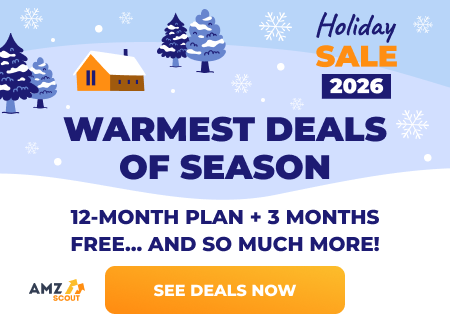
Cost and Time Analysis
To determine your business's potential profitability, it's crucial to thoroughly analyze your anticipated costs and investments. Evaluating these expenses will help you estimate profits, while considering the amount of time and work you’ll need to devote ensures that your venture will be productive and effective. First, let's review your mandatory expenses, such as:
Primary Expenses:
Inventory: Your initial investments vary based on the type of product and quantity, averaging around $1,000. For private-label items, costs tend to be higher due to customization.
Delivery to FBA centers: You'll need to cover the costs of packing and shipping orders to FBA centers. Your shipping fees will depend on the weight and destination of your goods. If your supplier is overseas, you’ll need to factor in additional import costs.
Amazon fees:
Storage fees: Amazon charges $0.78/cubic foot for storage.
Return fees: Return processing costs start at $1.65/unit.
Removal fees: Removal costs vary per item, typically ranging between $1 and $1.50.
Fulfillment fees: Fulfillment costs are around $7/unit, with discounts for larger orders.
Long-term storage fees: If your product is stored for over 180 days, costs start at $0.25/unit.
Additional Amazon expenses: You can choose to pay $0.99/sale or a flat fee of $39.99/month for the account plan. Additionally, all Amazon sellers pay referral fees, which depend on the product category and average around 15% of the product price.
There are other costs to consider as well that can impact your budget significantly, including:
Advertising costs: These will vary widely, depending on your marketing strategy and goals. On average, advertising costs can start from a few hundred dollars/month, based on the scale and competitiveness of your campaigns.
Professional services: You may also need to budget for services like professional photography, accounting, or hiring an Amazon FBA coach.
All of these costs might seem daunting to anyone who wants to start an Amazon business. However, it's important to remember that buying products at wholesale prices and selling them with a markup can bring substantial profits. Amazon has a vast customer base, providing you with numerous opportunities to earn. This marketplace visibility can translate into significant sales volume and revenue generation.
Also, using FBA to outsource specific tasks can help to streamline your operations, allowing you to maintain a profitable business with less hands-on involvement.
You'll save significant time so you can devote your work and effort to more worthwhile tasks by not having to pack your own orders, handle returns, and manage shipping, which can be particularly challenging during peak seasons with high order volumes. This allows you to focus on other vital business processes and accelerate your growth.
Despite financial and time-related expenses, using Amazon FBA can still lead to substantial profits. Let's delve deeper into the typical level of income that Amazon sellers can achieve by purchasing wholesale things at lower prices and selling them at higher prices.
How Much Can Amazon Sellers Make?
Selling on Amazon is really worth it, as there is a significant income potential, even with small investments. In 2023, nearly 90% of Amazon sellers turned a profit, with half of them earning at least $1,000/month. The profitability and time needed to reach this level will vary for each individual, but let's examine the average data:
Break-even period: 15% of sellers achieved profitability within three months of launching their businesses. Typically, these are individuals who sought guidance from an FBA coach.
Monthly profits: Many sellers earn between $5,000 and $50,000/month, with a notable 15% achieving over $50,000/month. Approximately 10% of sellers, often those with low-priced products ($3-$7), earn less than $1,000/month.
Various factors, such as marketing and business models, can influence profitability, but they all revolve around the product you sell. Let's explore strategies to maximize profitability.
How to Make Your Amazon Business More Profitable
The potential earnings from Amazon FBA vary widely, depending on factors like your preferred business model (reselling vs. private label), target audience, and other details. However, what remains consistent for all sellers is the choice of product itself: the higher its profit margins and demand, the more money you can make.
Finding the right stuff for sale isn't easy. For inspiration, check Amazon's bestseller lists, keeping in mind that they vary by country (e.g., UK, USA, Canada). Note that some items are more likely to succeed due to marketing efforts, brand popularity, or other factors.
It's crucial to thoroughly assess the profitability of any item before flipping it. However, the success of any item depends not only on high margins, but also on factors such as:
Competition: Avoid products sold by Amazon, as they're difficult to compete with.
Sales trends: Ensure that the sales trend is growing or stable to maintain high demand.
Price: Choose items priced between $30 and $100 to ensure a good profit.
Weight: Be mindful of shipping costs, as Amazon charges more for non-standard dimensions and items weighing over 4 lbs.
To save time and get precise data, consider using analytical tools like AMZScout. These tools are reliable and user-friendly, providing you with necessary data without being too overwhelming, and making it easier to assess and select profitable items.
Checking Product Profitability with the PRO Extension
To quickly assess whether an item is worth your time and effort, simply follow these steps:
1. Install the AMZScout PRO AI Extension. Enter your email address to start a free trial.
2. Search for a product. Enter a product name (such as “art books”) or an ASIN into the Amazon search field.
3. Open the PRO AI Extension. Click on the AMZScout PRO AI Extension icon in the upper right-hand corner of the page.
4. Evaluate the niche’s performance. In the upper right-hand corner of the page, click Niche Score. If the niche score is greater than 7, this indicates strong potential: low competition, high demand, and good profits.
5. Check a product’s performance. If the niche seems promising, click under any item from the list of results to assess its Product History. Review the sales data to confirm that the item experiences a stable trend without significant declines. This indicates consistent demand and reliable sales not only for today but in the long term.
6. Evaluate the profitability of items. Click on the Profit Calculator below each item. Enter your costs (purchase price, additional expenses) to calculate the profit margins. The FBA fees are automatically calculated by the extension. The tool displays your potential profit per product after deducting all of the expenses. Ensure that the margin exceeds 20% for optimal returns.
By conducting thorough research, you avoid the common pitfall of selling items without performing a thorough analysis, which can result in lost money and time. This ensures that the product will generate profits, not only enough to cover your costs but also to bring in substantial earnings.
Conclusion
Selling on Amazon FBA involves considerable costs, but these can be outweighed by the potential for substantial profits. Optimal product selection is the key to increase your chances of success and fully seize the benefits of Amazon FBA. Use AMZScout’s tools to help you identify and analyze promising options.

